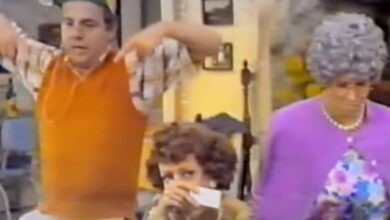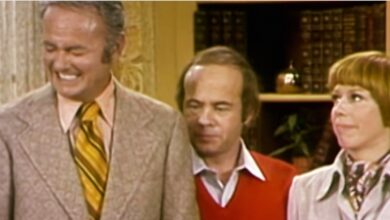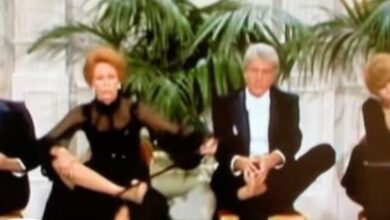Al Green’s “Let’s Stay Together” Reshapes Soul Music and Cements His Legacy in 1971
In late 1971, Al Green released “Let’s Stay Together,” a silky, tender, and passionate ballad that would not only become his signature song but also redefine the boundaries of soul music. The track emerged during a time of turbulence in America, offering listeners a sense of emotional steadiness through its message of enduring love. It became an instant sensation, reaching No. 1 on the Billboard Hot 100 and staying there for nine consecutive weeks on the R&B chart. Its seamless blend of soul, gospel, and pop made it a rare crossover hit, appealing to both Black and white audiences at a time when radio airplay was often still segregated.
Before “Let’s Stay Together,” Al Green was slowly building a name for himself in the soul scene but had yet to reach the mainstream acclaim that artists like Marvin Gaye and Aretha Franklin had already achieved. Born in Forrest City, Arkansas, and raised in Michigan, Green began performing at a young age in a gospel group with his brothers. His early recordings showed promise but lacked the refined direction that would later define his sound. That all began to change once he partnered with producer Willie Mitchell at Hi Records in Memphis. Green’s voice—flawlessly smooth yet capable of explosive emotion—was a unique instrument, and Mitchell recognized it immediately.
The idea for “Let’s Stay Together” was born out of the close working relationship between Green and Mitchell, who also co-wrote the song alongside Al Jackson Jr., the famed drummer of Booker T. & the M.G.’s. Jackson provided the steady rhythm foundation that would become crucial to the song’s structure, while Mitchell helped shape the arrangement into something both intimate and orchestral. Green reportedly had to be convinced to record the track, believing it didn’t quite suit his voice, but once he stepped into the vocal booth, everything changed. The recording captured not just a song but a spiritual plea wrapped in velvet tones.
Recorded at Royal Studios in Memphis, the track was a masterclass in production subtlety. Willie Mitchell employed lush horn sections, soft string flourishes, and a laid-back groove to frame Green’s vocal in a glowing ambiance. The instrumentation never competed with the vocal—it simply swayed and swelled beneath it. Green’s falsetto swoops and whispery deliveries created a sensual tension throughout the song, while the rhythm section anchored the track with just enough grit to keep it grounded in soul tradition. The final mix was elegant without being overproduced, emotionally rich without being melodramatic.
Upon release, “Let’s Stay Together” was met with critical and commercial acclaim. It topped the Billboard Hot 100 in early 1972 and also reached No. 1 on the R&B chart, where it remained dominant for weeks. The single became Al Green’s breakthrough, exposing him to a broader national audience and setting him apart as a leading voice in soul music. The song’s popularity extended well beyond the charts—it became a staple at weddings, on radio stations, and in film and television, solidifying its place in popular culture.
Culturally, the song marked a pivotal moment in the evolution of soul. It bridged the raw emotive style of gospel-influenced soul with the smoother textures that would later define quiet storm and modern R&B. At a time when Black music was increasingly politicized and experimental, Green’s message of romantic unity felt both revolutionary and reassuring. He demonstrated that soul music could be both deeply personal and universally relatable, carving out a space for intimacy in a genre that often celebrated heartbreak and rebellion.
“Let’s Stay Together” propelled Al Green to superstardom. It opened the floodgates for a string of hits throughout the early and mid-1970s, including “Tired of Being Alone,” “I’m Still in Love with You,” and “Call Me.” The song gave Green the creative confidence to explore deeper emotional territory in his music, and it solidified his working relationship with Willie Mitchell, who continued to shape Green’s artistic vision over the next several albums. International tours and television appearances followed, as did a wider appreciation for his blend of vulnerability and vocal control.
The track also influenced a new generation of artists and producers who were inspired by its warmth, restraint, and emotional honesty. From Prince and D’Angelo to Maxwell and John Legend, countless musicians have cited Al Green’s vocal style and the sonic palette of “Let’s Stay Together” as foundational to their approach. The song’s impact helped usher in a more refined era of soul, where emotion was conveyed through nuance rather than volume, and where arrangements were treated as delicate ecosystems supporting the singer.
Over the years, “Let’s Stay Together” has been reinterpreted by artists from nearly every genre. Tina Turner’s fiery 1983 version introduced the song to a rock and pop audience, earning her a major comeback hit. Isaac Hayes and Luther Vandross each offered their own renditions, adding different shades of emotion while paying homage to Green’s original. The track has been sampled, covered, and remixed countless times—yet the purity of the original recording remains unmatched.
Around the time of the song’s peak popularity, Green experienced a rapid rise in fame that also brought personal challenges. Fame, relationships, and the pressures of the industry weighed heavily on him, and by the late 1970s, he shifted away from secular music to pursue gospel. While his spiritual journey led him down a different path, “Let’s Stay Together” remained a constant in his repertoire, even during his religious performances. It represented the heart of who he was—an artist capable of touching souls through simplicity and sincerity.
The song’s legacy continues to grow. It remains one of the most requested love songs on radio stations and is frequently included on “greatest songs” lists by publications like Rolling Stone and Billboard. It’s been inducted into the Grammy Hall of Fame and the Library of Congress’ National Recording Registry—an acknowledgment of its enduring cultural and artistic importance. It continues to resonate with new listeners, offering a timeless message of devotion and unity.
“Let’s Stay Together” helped shape the trajectory of modern R&B by setting a gold standard for production quality, vocal performance, and emotional depth. The combination of live instrumentation, silky textures, and lyrical intimacy became a blueprint that future generations would follow. It also influenced producers to emphasize groove and atmosphere as much as melody, redefining the studio’s role in shaping soul records.
In later years, Al Green received numerous accolades, including lifetime achievement awards and inductions into multiple music halls of fame. His contributions to soul, gospel, and American music at large are monumental, and “Let’s Stay Together” stands as his most defining moment. It has come to represent not just his artistry, but a universal desire for love that lasts through trials and change.
Ultimately, “Let’s Stay Together” remains a jewel in the crown of 1970s soul music—a song that transcends trends and decades with its message of loyalty and emotional depth. Its success affirmed Al Green’s place among the greatest vocalists of all time, and its influence ripples through every corner of modern R&B and pop. It’s more than just a love song—it’s a lasting testament to what soul music can be when it reaches for something pure and eternal.





